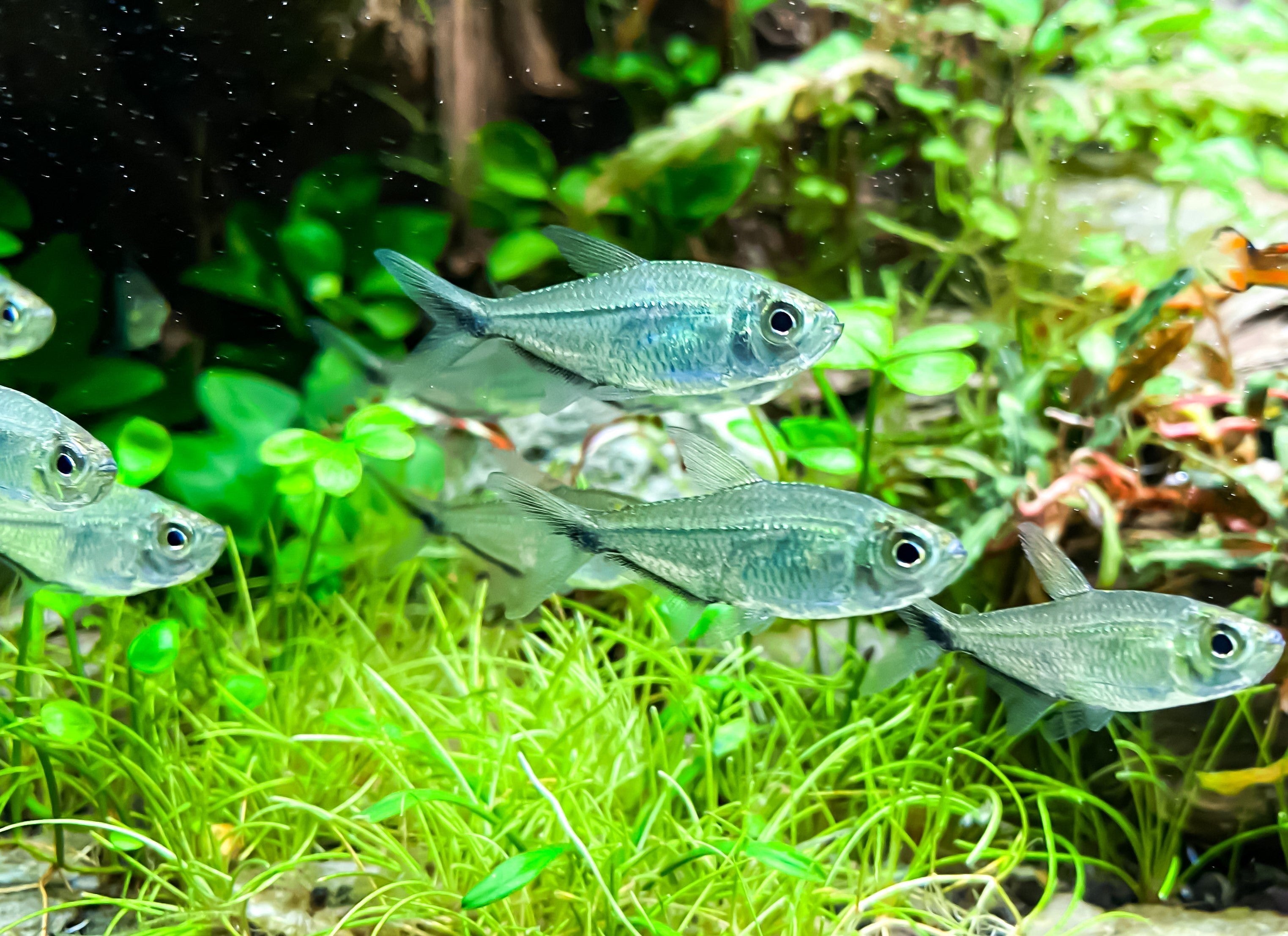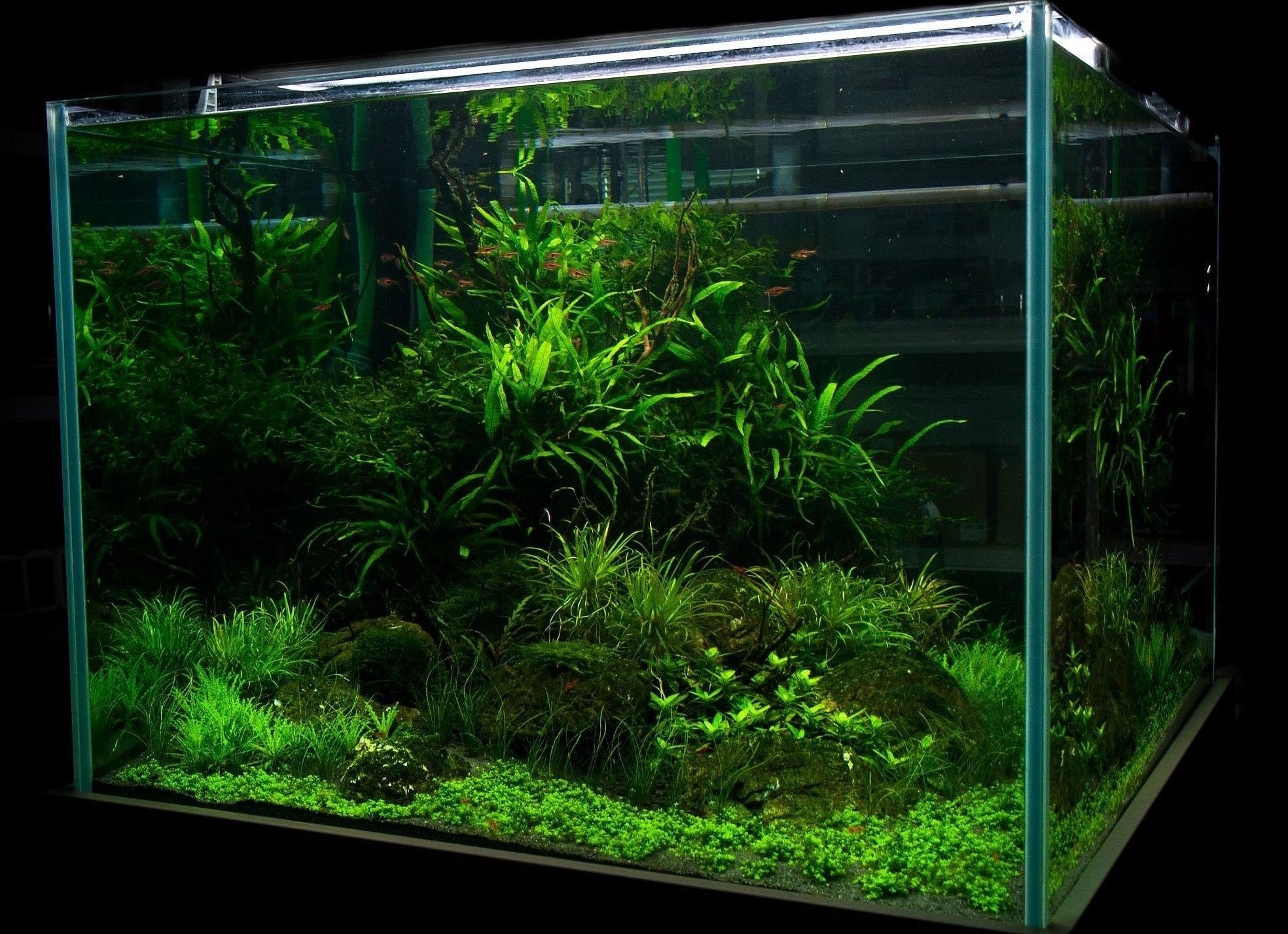Do you want to create an alien landscape within your planted fish tank, or do you want to make your planted aquarium stand out? Planted tanks often look similar to one another, having some unusual plants will help your tank stand out from the crowd. If you have more than one planted tank at home then why not try to setup an alien aquascape, which looks completely different to the rest of your aquascapes. In this article I will go over some interesting oddball plant species to try out. If you create an aquascape using all the plants in this list, you will have a very interesting, planted aquarium like no other! These plants can look very good when mixed in with more conventional looking plant species so this list is also useful for more typical aquascapes.
Oddball Plants:
Moss Ball – Moss balls are incredibly odd looking when you first set eyes on them. They do not appear real; I remember my first interaction with these I thought the shop keeper was joking. How could a live plant look so artificial? It turns out moss balls are a natural phenomenon found in Japan and Northen Europe, the lake tides push the moss back and forth creating a spherical appearance. These are slow growing and easy to plant, just place them in the aquarium. Technically these moss balls are not moss at all, they are a form of algae, nevertheless they look incredible and are easy to care for. Moss balls are a very popular odd looking aquatic plant choice for your aquarium, if you have not tried them out, give them a go!
Vallisneria Spiralis – Vallis or Vallisneria is a very popular, cheap plant with long thin leaves. Vallisneria multiples by sending off runners to grow new plantlets. It comes in a few varieties, the spiral one maybe a bit a little harder to find but it is worth it if you are looking for an oddball plant. The corkscrew shaped leaves look great and really make an interesting focal point within an aquascape.
Redroot Floater – Floating plants in general are fantastic for your water quality; they absorb nitrate and grow at a fast rate. Most floating plants have roots which can be viewed within an aquarium. Red root floaters by no surprise have bright red roots, some also have red leaves. These little plants are great for providing shade in an aquarium for shy fish and low light plant species. The trail of red roots across the waterline of the aquascape can create a sunset like affect.
Pogostemon Helferi – This is typically a carpeting plant which has very distinctive green leaves. The leaves are frilly and spiky in appearance. This plant really does best with the addition of pressurised CO2, especially if you want it to form a carpet in the foreground of your aquascape. It almost looks like a fake plastic plant due to the leaf structure and it adds a usually unseen texture. Keep it trimmed low to ensure you see compact growth.
Hydrocotyle Tripatita – This plant is like no other in the hobby, it has small clover like leaves attached to a vine like stem. This plant looks very much like a terrestrial plant you would find on the ground or in a terrarium. Hydrocotyle Tripatita appreciates good lighting and CO2 if you want it to form dense compact growth. It will send out long stems throughout the aquarium mimicking an overgrown ruin.
Subwassertang – This is plant is unlike any other aquatic plant in the hobby in terms of its structure. From a far you would be forgiven to assume this is a type of moss but upon closer inspection it becomes clear that this seaweed like plant is not a moss at all, it is in fact a form of small fern. This plant has semi transparent leaves which look like seaweed, it has no visible roots, and grows in clumps in a similar fashion to moss. This plant should be glued or wedged in place, shrimp love to graze amongst this plant!
An honourable mention to red stem plants and mosses – Both types of plant can really help make an impactful alien landscape if you wish them to. These are both so different to your usual bunched green stem plants you find in most aquatic shops. Bear in mind some red stem plants and mosses require strong lighting and pressurised CO2 to thrive. Consider red stem plants and moss if you have not tried them before as they can be very impactful.
Pro tip: Remember CO2 benefits even easy care green plants. So even if you have mostly easy care plants consider the addition of CO2 for the best results. Aquatic plants with the addition of CO2 have better colour, have more compact growth and grow much faster! Stem plants especially benefit from the addition of CO2 as this stops them from become leggy over time.
AQUAnatur
AQUAnatur was created by an established UK aquarium installation and maintenance company near London which has been running for over 25 years! Our team are very experienced and happy to help offer advice with any aquarium questions. We are always available via phone or email Monday -Friday, feel free to contact us, we would love to help! AQUAnatur supply a range of aquariums and aquascaping products. If you have a question, please leave a comment or contact us via phone or email.
By Alasdair McPhail




Leave a comment
All comments are moderated before being published.
This site is protected by hCaptcha and the hCaptcha Privacy Policy and Terms of Service apply.